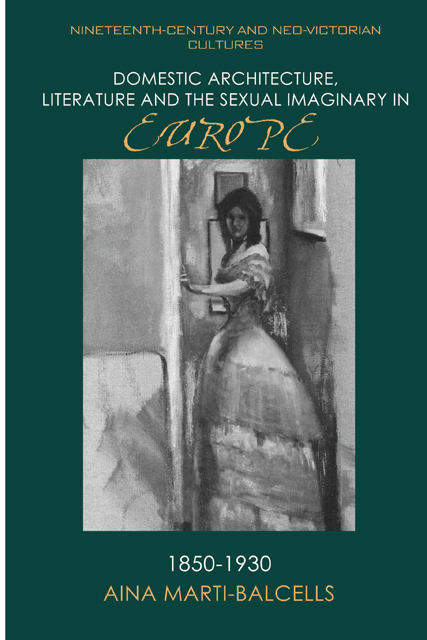Book contents
- Frontmatter
- Contents
- Series Preface
- Dedication
- Introduction
- 1 Adultery and the Subversion of Architectural Prescriptiveness in Madame Bovary and The Return of the Native
- 2 Sexual Accessibility and Exhibitionism: Glass in La Curée
- 3 Glass Dwellings and the Dissolution of Adultery in Fontane’s L’Adultera
- 4 Domestic and Sexual Circulation in Huysmans’ En ménage
- 5 Vienna: Towards a New Domestic Imaginary
- Bibliography
- Index
2 - Sexual Accessibility and Exhibitionism: Glass in La Curée
Published online by Cambridge University Press: 02 June 2023
- Frontmatter
- Contents
- Series Preface
- Dedication
- Introduction
- 1 Adultery and the Subversion of Architectural Prescriptiveness in Madame Bovary and The Return of the Native
- 2 Sexual Accessibility and Exhibitionism: Glass in La Curée
- 3 Glass Dwellings and the Dissolution of Adultery in Fontane’s L’Adultera
- 4 Domestic and Sexual Circulation in Huysmans’ En ménage
- 5 Vienna: Towards a New Domestic Imaginary
- Bibliography
- Index
Summary
In Zola’s La Curée (1872), Maxime, son of real estate businessman Aristide Saccard, commits incest with his stepmother Renée Saccard inside the ‘cage de verre’ (glass cage) (Zola [1872] 1981: 220), the hothouse in the Saccards’ residence that epitomises glass architecture. The hothouse, ‘a material imprint of […] modernity in [its] characteristic glass and iron construction’ (Tanner 2015: 117), becomes a locus of un-domesticated sexuality when Renée and Maxime commit incest. The location of a sexual perversion in an emblematic representation of modern architecture adds to the anxieties around glass in private residences and exemplifies how glass was actively shaping the sexual imagination. In La Curée, the ‘cage de verre’ (glass cage) reimagines notions of boundaries, perversity, natural sexuality, and the public and the private spheres in Second-Empire Paris, the cradle of European urbanism in the second half of the century, as well as the birth of modern Paris.
Napoleon III had in mind a massive renovation of the city according to principles of hygiene and security. Georges-Eugène Haussmann, Prefect of the Department of the Seine in 1853, received the mandate to execute the Emperor’s plans whereby he opened up narrow and unhealthy streets to avoid barricades, improved canals and railway networks, and created public green spaces, among other renovations (Harvey 2006: 107). Haussmann accomplished the Emperor’s political plans by approaching Paris as a totality where its different parts were interconnected (Harvey 2006: 111). While the Emperor aimed at ‘the expulsion of “dangerous classes” and insalubrious housing and industry from the city centre’, this project of urban reform led to ‘improv[ing] the capacity for the circulation of goods and people’ (Harvey 2006: 112). Although Haussmann’s design responded to processes that started with anteriority, such as ‘housing investment and residential segregation’ (Harvey 2006: 113), notions of circulation conformed to ideas of house moving and echoed the movement of a speculative real estate market that started in the late nineteenth century. In this urban context, Zola locates the Saccards’ newly built residence in La Curée. Located in Parc Monceau, the hôtel Saccard emerges as a symbol of social, political and economic modernity in which Aristide Saccard makes his fortune in the real estate market.
- Type
- Chapter
- Information
- Publisher: Edinburgh University PressPrint publication year: 2022



